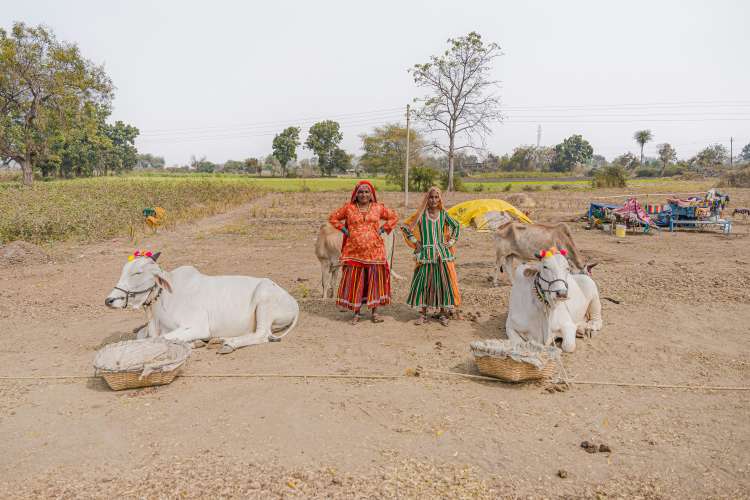The microfinance industry, a vital support system for low-income households, is facing numerous challenges that are hindering its ability to serve the underserved population. Rising bad loans and borrower over-leveraging are particularly impacting these companies, with a notable increase in the number of borrowers holding more than four loans from different lenders. According to Fusion Finance Ltd, a listed microfinance company, the evolving credit behaviour of its borrowers shows that many new customers are taking loans beyond their repayment capacity.
Data from leading microfinance players highlight the brewing troubles within India’s microfinance sector. These companies are seeing a drop in unique customers, indicating that many borrowers hold multiple loans. While the total microfinance loan book grew from Rs 1.07 trillion in FY17 to Rs 4.34 trillion in FY24, at a compound annual growth rate of 22.1%, the number of unique borrowers increased by only 6.9%. Meanwhile, the average loan per borrower rose by 14.3%.
READ | India-US trade: Unlocking a $500bn potential amid challenges
Microfinance in India
MFI has become a crucial tool for promoting inclusive and sustainable growth. India’s vast rural landscape remains underserved and demands a financial ecosystem responsive to the needs of communities in remote areas. Microfinance aims to ensure financial inclusion, women’s empowerment, and digital inclusion. The Reserve Bank of India (RBI) recently defined microfinance as collateral-free loans to households with annual incomes of up to Rs 3 lakh.
Major players in the market include Annapurna Finance, BSS Microfinance Limited, Asirvad Microfinance Limited, Bandhan Bank, and CreditAccess Grameen Limited. If managed effectively, microfinance could play a pivotal role in India’s economic growth.
However, the sector is plagued by issues from both the consumer and company sides. The challenges facing India’s microfinance industry are not unique. Borrowers in Cambodia, Jordan, Sri Lanka, and Mexico are also experiencing a shift in the industry, with lenders prioritising profits over serving the poor. In India, a wave of suicides has not discouraged millions of new borrowers, but the result is often the same—the dream of financial inclusion has turned into a nightmare of debt.
While MFIs are regulated by the RBI, there is a lack of regulation at the state level, leading to inconsistencies in operations across different states. Recently, the RBI Deputy Governor criticised micro lenders for disproportionately raising their margins without passing on the benefits of the new deregulated regime to borrowers. In fact, MFI loans are often costlier than other types of loans. Many microfinance institutions increased their loan rates to recover losses incurred during the COVID-19 pandemic, but it remains unclear how many have reduced these rates after recouping those losses.
In an earlier article by Policy Circle on the funding freeze in the microfinance industry, an industry observer affirmed that microfinance in India has become an exploitative option. Despite being formed with the expectation of helping rural India thrive, MFIs remain concentrated in areas where banks are already present. They are not reaching the places and communities where they are most needed. Their focus should be on serving the unbanked population, which includes women, marginalised communities, and those in remote locations. Instead, MFIs have shifted toward extending individual loans to micro-entrepreneurs.
Many insiders have downplayed concerns about over-leveraging. Alok Mishra, CEO of the Microfinance Institutions Network (MFIN), one of two self-regulatory organisations (SROs) for the sector, has stated that the growth in average outstanding loan per borrower aligns largely with inflation. While the proportion of borrowers with outstanding loans exceeding ₹1.5 lakh has increased to 4.7%, this affects only a small segment.
However, MFIs are also responsible for the issue of over-leveraging, as they sometimes entice consumers with top-up loans on previously defaulted loans. Without acknowledging these problems, micro lenders cannot arrive at a concrete solution. The industry must address issues such as deteriorating asset quality, high employee turnover, and the extension of loans to defaulting borrowers.
SROs like MFIN and Sa-Dhan have introduced measures to safeguard the industry and ensure discipline in field operations and borrower welfare. These include capping a borrower’s loan repayment obligation at 50% of household income, limiting the number of microfinance lenders per borrower to four, and capping total indebtedness at Rs 2 lakh, as prescribed by the RBI.
The RBI has been closely monitoring the MFI, but it remains to be seen when it will take decisive action.

